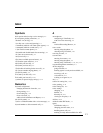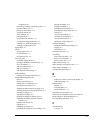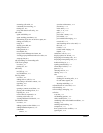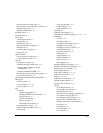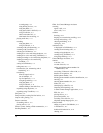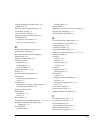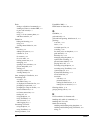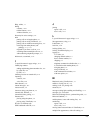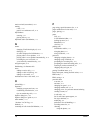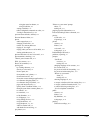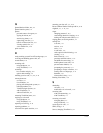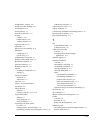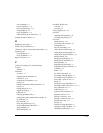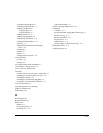
I-12
shared folders, viewing, 8-26
shared voice mail, deleting, 8-26
sharing folders, 8-24
sharing stations, 7-2
shortcuts to dial calls, 12-11
showing
columns, 18-22
toolbar buttons, 18-24
window elements, 8-12
signing in and out, B-2
silent hold, 4-11
SIP accounts, customizing, 18-19
SIP phones
configuring, 6-14
tips for using, 6-15
speakerphone, as intercom, 3-6
speakers, audio output from, 8-12
Speed Dial command, 12-6
speed dial shortcuts, 12-11
Standard routing list, 15-8
stations
imitating on routed calls, 6-10
sharing, 7-2
statistics for queues
displayed, C-3
when reset, C-12
status bar, 8-12
statuses. See personal statuses
stop button, 8-27
stutter dial tone
defined, 5-3
turning on and off, 13-12, 18-20
supervised transfers
defined, 4-8
using the phone, 4-8
using ViewPoint, 11-11
supervising call center queues
overview, C-2
changing agents’ personal status, C-19
monitoring, coaching, and joining agents’ calls, C-16
without receiving calls, C-2
supervising users’ calls, 12-14
support, technical, 1-4
synchronizing with Microsoft Exchange Server, 13-7
System camp on greeting, 15-14
System Hold Greeting, 15-13
T
tabs
in Call Monitor folder, 11-3
in Extensions list, 10-3
TAPI Service Provider
overview, 1-3
using from other contact manager
applications
, 16-12
technical support, 1-4
telephone commands
overview, 1-2
after making a recording, 5-6
call handling commands, 4-7
selecting language of, 18-6
silencing during hold, 4-11
tables
call announcing commands, A-1
call handling commands, A-2
personal status selection, A-8
quick call commands using *, A-3
voice mail/account menu, A-7
voice message commands, 5-4
when answering a call with call announcing, 4-2
tip of the day, 8-8
tips of the day, 8-3
title bar, flashing on incoming calls, 18-17
toolbar
overview, 8-9
dial field on, 12-2
hiding and showing buttons, 18-24
transferring calls
announcing name of person doing the transfer, 18-7
blind or supervised, 4-8



